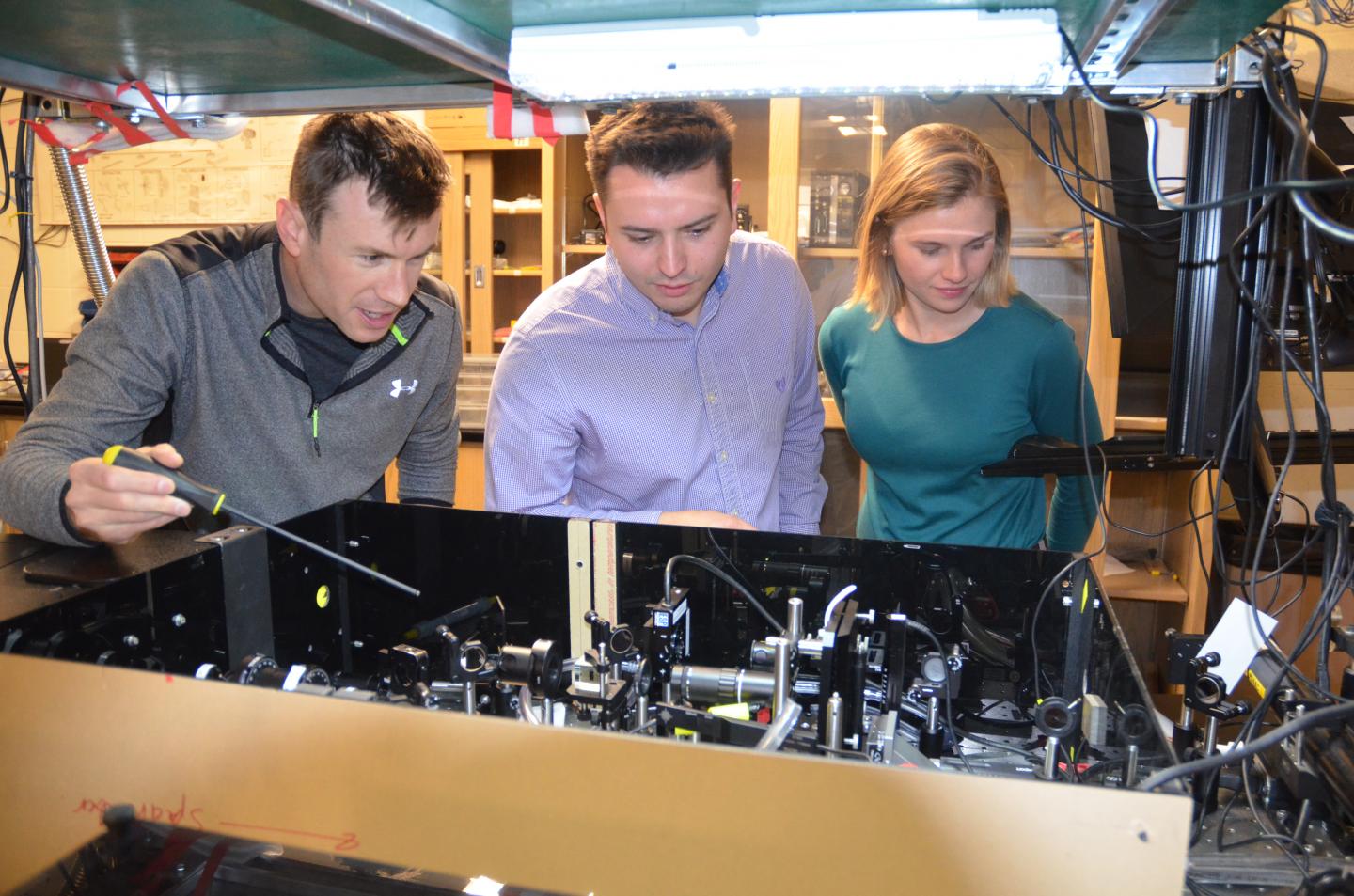
Credit: University of Wyoming
A University of Wyoming researcher and his team have shown, for the first time, the ability to globally align single-wall carbon nanotubes along a common axis. This discovery can be valuable in many areas of technology, such as electronics, optics, composite materials, nanotechnology and other applications of materials science.
“Unlike previous efforts to align nanotubes using nanotube solution filtration, we created an automated system that could create multiple aligned films at one time,” says William Rice, an assistant professor in UW’s Department of Physics and Astronomy. “Automating the filtration system also had the effect that we could precisely control the filtration flow rate, which produced higher alignment.”
Rice was corresponding author of a paper, titled “Global Alignment of Solution-Based, Single-Wall Carbon Nanotube Films via Machine-Vision Controlled Filtration,” which was published Oct. 9 in the print version of Nano Letters, an international journal that reports on fundamental and applied research in all branches of nanoscience and nanotechnology. An online version of the paper appeared last month.
Joshua Walker, a third-year physics Ph.D. student from Cheyenne, was the paper’s lead author. Valerie Kuehl, a third-year Ph.D. chemistry student from Beulah, Colo., was a contributing author of the paper.
Single-wall carbon nanotubes are one-dimensional crystals formed by wrapping a single layer of graphite, often called graphene, into a nanoscopic cylinder. They are 0.5 to 1.5 nanometers in diameter and range from 200 to 10,000 nanometers in length. One nanometer is one-billionth of a meter.
Because of this unique geometry, carbon nanotubes can either be metals or semiconductors, depending on how the graphene is wrapped, Rice explains. Carbon nanotubes can exhibit remarkable electrical conductivity, and they possess exceptional tensile strength and thermal conductivity.
“Aligned carbon nanotubes have the potential to act as excellent optical polarizers, which are important for optically determining strain in materials. For example, if you look at your windshield with polarized glasses, you can see areas of different strain in the glass,” Rice says. “Recent work by other groups also suggests that aligned nanotubes can be used as transistors, polarized light emitters and directional heat sinks. The hope is that a new generation of all-carbon electronics can be ushered in with the use of carbon nanotubes, graphene and vacancies in diamonds.”
Over the last decade, substantial progress has been made in the chemical control of single-wall carbon nanotubes. Rice and his team used machine-vision automation and parallelization to simultaneously produce globally aligned, single-wall carbon nanotubes using pressure-driven filtration. Feedback control enables filtration to occur with a constant flow rate that not only improves the nematic ordering of the single-wall carbon nanotubes, but also provides the ability to align a wide range of single-wall carbon nanotube types and on a variety of nanoporous membranes using the same filtration parameters.
Additionally, Rice says his research team flattened the meniscus of the nanotube solution in the glass funnel using a treatment process called silanization. This prevented the nanotubes from becoming scrambled by an uneven solution front as the nanotubes were filtered. These two advances produce nanotube films that exhibit excellent alignment across the entire structure, which was measured using a variety of polarized optical techniques.
“Carbon nanotubes are significant material system because of their impressive physical properties, such as extremely high thermal conductivity; a Young’s modulus much greater than steel; current-carrying capacity a thousand times that of copper; and excellent light-matter coupling,” he says.
A Young’s modulus is ratio of the stress (force per unit area) to the strain (percentage change in the physical dimensions) in a material, Rice says. Plastics, rubber and wood have low Young’s moduli, while steel, diamond and nanotubes have high Young’s moduli.
###
Jeffrey Fagan, a chemical engineer with the Materials Science and Engineering Division at the National Institute of Standards and Technology (NIST); Adam Biacchi, a materials chemist with the Nanoscale Device Characterization Division of NIST; Thomas Searles, an assistant professor in Howard University’s Department of Physics and Astronomy; and Angela Hight Walker, a project leader with the Nanoscale Device Characterization Division of NIST, also contributed to the paper.
Media Contact
William Rice
[email protected]
Original Source
http://www.
Related Journal Article
http://dx.





